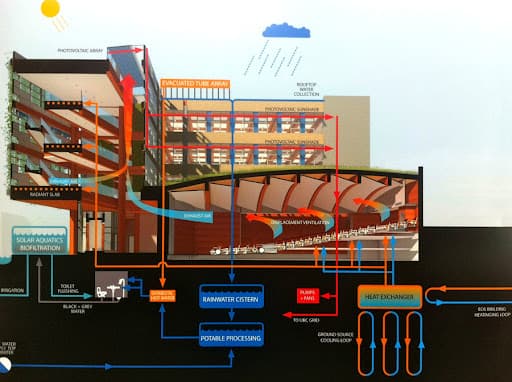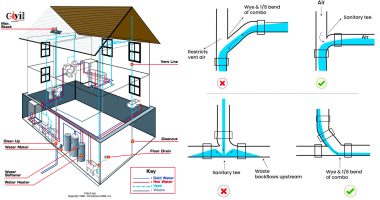Essential Insights About Your Home's Plumbing System Anatomy
Schedule And PricingThe article below on the subject of Understanding Your Home's Plumbing Anatomy is totally enlightening. Check it out for yourself and see what you think of it.

Recognizing exactly how your home's pipes system works is crucial for each home owner. From delivering clean water for alcohol consumption, cooking, and showering to securely removing wastewater, a well-kept pipes system is essential for your household's wellness and comfort. In this detailed overview, we'll explore the elaborate network that comprises your home's pipes and deal tips on upkeep, upgrades, and taking care of common problems.
Introduction
Your home's plumbing system is more than just a network of pipes; it's a complex system that ensures you have access to clean water and efficient wastewater removal. Knowing its components and how they collaborate can assist you stop expensive repair services and make sure every little thing runs efficiently.
Basic Components of a Plumbing System
Pipes and Tubing
At the heart of your pipes system are the pipelines and tubes that lug water throughout your home. These can be made from different materials such as copper, PVC, or PEX, each with its advantages in terms of resilience and cost-effectiveness.
Fixtures: Sinks, Toilets, Showers, etc.
Components like sinks, commodes, showers, and tubs are where water is utilized in your home. Understanding how these components link to the plumbing system aids in detecting troubles and preparing upgrades.
Valves and Shut-off Points
Shutoffs manage the flow of water in your pipes system. Shut-off shutoffs are critical throughout emergencies or when you require to make repairs, allowing you to isolate parts of the system without disrupting water flow to the entire home.
Water System System
Key Water Line
The main water line links your home to the community water supply or a private well. It's where water enters your home and is distributed to numerous fixtures.
Water Meter and Stress Regulatory Authority
The water meter steps your water usage, while a pressure regulator ensures that water moves at a risk-free stress throughout your home's pipes system, preventing damages to pipes and components.
Cold Water vs. Warm water Lines
Understanding the difference between cold water lines, which supply water straight from the primary, and hot water lines, which lug warmed water from the water heater, assists in fixing and planning for upgrades.
Drainage System
Drain Pipeline and Traps
Drain pipes lug wastewater far from sinks, showers, and toilets to the sewage system or septic tank. Catches stop drain gases from entering your home and additionally trap particles that could create blockages.
Ventilation Pipelines
Ventilation pipelines allow air right into the drain system, avoiding suction that can slow down water drainage and trigger catches to empty. Proper air flow is vital for keeping the stability of your pipes system.
Significance of Correct Drainage
Guaranteeing correct water drainage stops backups and water damage. Regularly cleaning up drains pipes and maintaining catches can stop costly repair services and extend the life of your plumbing system.
Water Heater
Sorts Of Hot Water Heater
Water heaters can be tankless or standard tank-style. Tankless heating systems warmth water on demand, while storage tanks save heated water for instant usage.
Updating Your Plumbing System
Reasons for Updating
Upgrading to water-efficient fixtures or changing old pipelines can boost water quality, minimize water costs, and enhance the worth of your home.
Modern Pipes Technologies and Their Advantages
Explore innovations like clever leakage detectors, water-saving toilets, and energy-efficient water heaters that can save cash and lower ecological impact.
Cost Considerations and ROI
Calculate the upfront expenses versus long-lasting financial savings when considering plumbing upgrades. Lots of upgrades spend for themselves through decreased energy costs and fewer repair work.
Exactly How Water Heaters Link to the Plumbing System
Comprehending just how hot water heater link to both the cold water supply and warm water circulation lines helps in identifying issues like inadequate warm water or leakages.
Upkeep Tips for Water Heaters
Routinely flushing your water heater to remove debris, inspecting the temperature level setups, and inspecting for leaks can extend its life expectancy and boost power efficiency.
Common Plumbing Issues
Leaks and Their Causes
Leaks can occur as a result of maturing pipes, loose fittings, or high water pressure. Addressing leaks quickly avoids water damages and mold and mildew development.
Clogs and Clogs
Clogs in drains pipes and toilets are commonly triggered by flushing non-flushable items or an accumulation of grease and hair. Using drainpipe screens and bearing in mind what goes down your drains can stop blockages.
Indicators of Pipes Troubles to Expect
Low water pressure, slow drains, foul odors, or abnormally high water costs are indications of potential plumbing troubles that need to be addressed promptly.
Pipes Maintenance Tips
Normal Evaluations and Checks
Set up yearly plumbing examinations to catch concerns early. Try to find signs of leaks, corrosion, or mineral accumulation in faucets and showerheads.
Do It Yourself Upkeep Tasks
Easy jobs like cleaning faucet aerators, looking for bathroom leaks making use of dye tablet computers, or insulating revealed pipelines in cold environments can prevent significant pipes problems.
When to Call a Specialist Plumbing Technician
Know when a pipes concern needs specialist know-how. Attempting complicated repairs without correct understanding can bring about more damage and greater repair prices.
Tips for Decreasing Water Usage
Basic behaviors like repairing leakages promptly, taking shorter showers, and running complete lots of laundry and meals can preserve water and lower your utility expenses.
Eco-Friendly Pipes Options
Take into consideration sustainable pipes products like bamboo for flooring, which is durable and environment-friendly, or recycled glass for kitchen counters.
Emergency Preparedness
Steps to Take During a Plumbing Emergency situation
Know where your shut-off shutoffs lie and how to turn off the water system in case of a ruptured pipeline or major leak.
Value of Having Emergency Situation Contacts Handy
Keep get in touch with info for local plumbings or emergency situation solutions conveniently offered for quick reaction during a pipes dilemma.
Ecological Effect and Preservation
Water-Saving Components and Devices
Mounting low-flow faucets, showerheads, and commodes can considerably minimize water usage without compromising performance.
DIY Emergency Situation Fixes (When Relevant).
Temporary fixes like using air duct tape to spot a dripping pipeline or positioning a pail under a trickling tap can lessen damages up until an expert plumbing technician gets here.
Verdict.
Recognizing the composition of your home's plumbing system empowers you to maintain it properly, conserving money and time on fixings. By complying with routine maintenance regimens and remaining notified about contemporary plumbing technologies, you can ensure your pipes system operates efficiently for years ahead.
Exploring Your Homes Plumbing Anatomy
Water Supply System
Main Water Line: This is where water enters your home from the municipal supply or a private well. Water Meter: Typically located near where the main water line enters the property, it measures the amount of water used. Shutoff Valve: It s crucial to know where this is in case of emergencies. It allows you to turn off the water supply to the entire house. Pipes and Fittings: These distribute water throughout your home. Materials can include copper, PVC, or PEX. Drain-Waste-Vent (DWV) System
Drains: Located in sinks, showers, and tubs, these carry wastewater away. Traps: U-shaped pipes under sinks that hold standing water, blocking sewer gases from entering the home. Vents: Pipes that lead from the DWV system to the outside, preventing vacuum formation and allowing gases to escape. Sewer Line: Carries all wastewater from the home to the municipal sewer system or a septic tank. Fixtures and Appliances
Sinks, Toilets, and Showers Dishwashers and Washing Machines Water Heaters Maintenance Tips
Regularly check for leaks in exposed pipes and around fixtures. Inspect the water heater annually for signs of wear. Clean drains and traps to prevent clogs and odors. Know how to shut off water to individual fixtures. When to Call a Professional
Major leaks or burst pipes Installation of new pipes or fixtures Septic tank issues Remodeling projects that involve plumbing changes Conclusion
Understanding the anatomy of your home's plumbing is key to maintaining a functional and efficient system. Regular checks and knowing when to call in the experts can save you time, money, and stress.
https://www.mavyn.com/blog/exploring-your-homes-plumbing-anatomy

As a reader about Anatomy of a House: Understanding the Components, I figured sharing that chunk was really helpful. Those who enjoyed our blog posting kindly don't forget to share it. I take joy in your readership.
Click Here